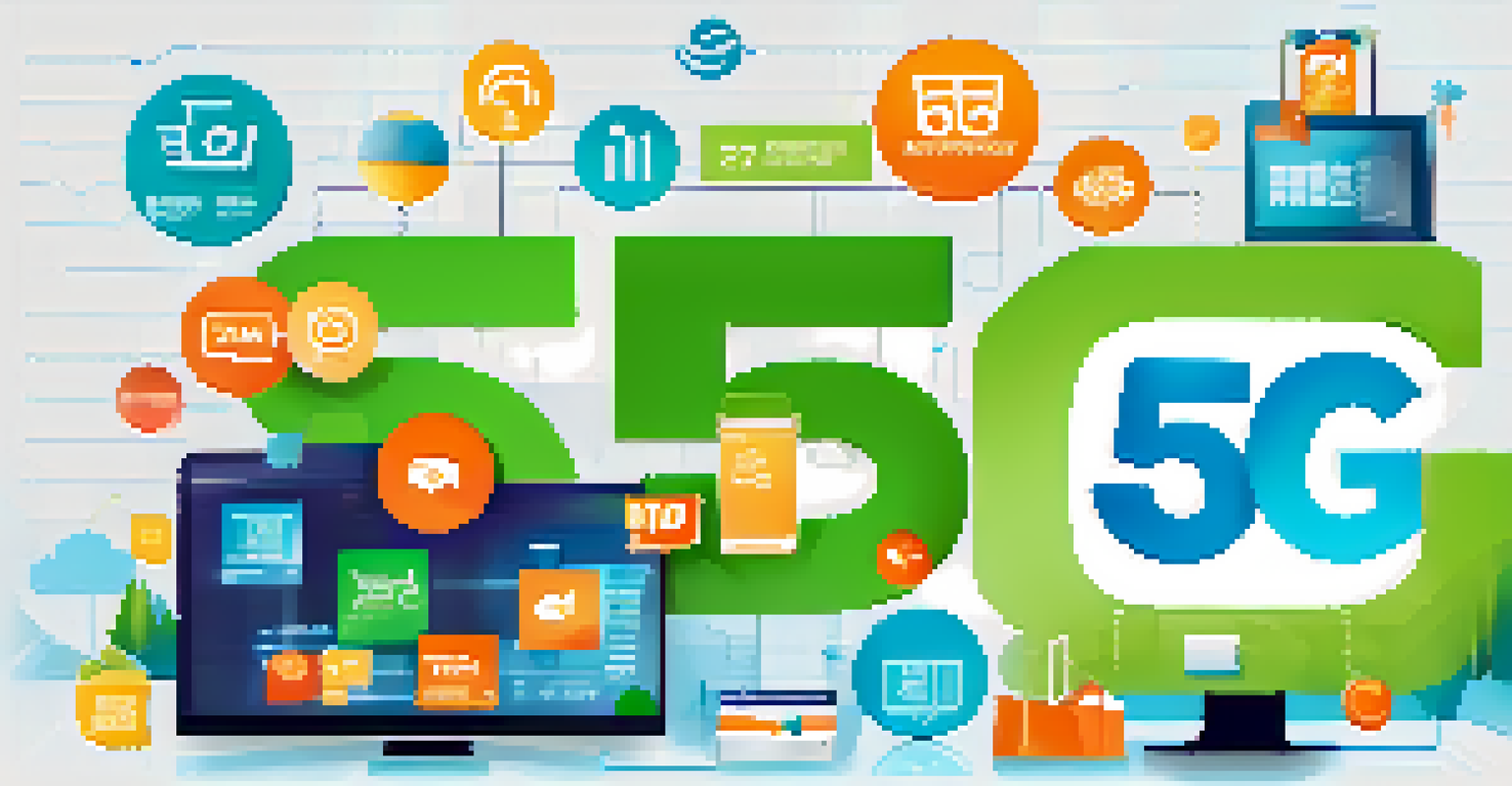The Impact of 5G Technology on E-commerce Growth and Speed

Understanding 5G Technology and Its Benefits
5G technology represents the fifth generation of mobile networks, promising faster speeds, lower latency, and greater connectivity. While 4G transformed our browsing habits, 5G takes it a step further, enabling seamless experiences for users. Imagine downloading an HD movie in seconds instead of minutes—this is the kind of efficiency 5G brings to the table.
The future of shopping is not just about faster connections but about creating experiences that resonate with customers on a personal level.
The benefits of 5G extend beyond speed; it also enhances the reliability of connections. This means that e-commerce platforms can operate more smoothly, minimizing downtime and ensuring that customers have a positive experience. With 5G, the digital shopping experience becomes as reliable as the in-store experience.
Additionally, 5G opens the door for innovative technologies such as augmented reality (AR) and artificial intelligence (AI) to flourish in e-commerce. These advancements can lead to personalized shopping experiences, making customers feel more connected to brands.
Faster Load Times Mean Happier Shoppers
In the world of e-commerce, speed is everything. Studies have shown that even a one-second delay in loading time can lead to significant drops in conversion rates. With 5G's ultra-fast data transmission, websites can load in the blink of an eye, keeping potential customers engaged and ready to buy.

Imagine a customer browsing your online store. With 5G, pages load quickly, product images are sharp, and payment processing is almost instantaneous. This seamless experience encourages customers to complete their purchases rather than abandon their carts out of frustration.
5G Boosts E-commerce Speed
With ultra-fast data transmission, 5G technology significantly reduces loading times, enhancing customer engagement and boosting conversion rates.
Ultimately, faster load times not only improve customer satisfaction but also boost sales. A smoother shopping experience can lead to higher conversion rates and increased customer loyalty, as shoppers are more likely to return to a platform that respects their time.
Enhanced Mobile Shopping with 5G
As mobile shopping continues to rise, 5G technology plays a crucial role in enhancing the mobile e-commerce experience. With more consumers using their smartphones to shop, the need for faster and more reliable connections has never been greater. 5G provides this, making mobile shopping not just viable but enjoyable.
Technology is best when it brings people together, enabling seamless interactions and enhancing everyday experiences.
Thanks to 5G, mobile apps can handle rich media content like videos and AR features without lag. Shoppers can interact with products in real-time, visualize them in their living spaces, and make informed decisions, all from the convenience of their phones. This interactivity can significantly lead to higher sales.
Moreover, 5G allows for better integration of location-based services. Businesses can send personalized offers to customers based on their geographic location, enhancing the shopping experience and driving foot traffic to physical stores.
Improved Inventory Management and Logistics
E-commerce relies heavily on effective inventory management and logistics. 5G technology can streamline these operations, enabling real-time tracking of stock levels and shipments. This means businesses can react swiftly to changes in demand, ensuring they always have the right products available for their customers.
With enhanced connectivity, businesses can implement IoT (Internet of Things) devices that monitor inventory levels automatically. These devices communicate seamlessly over 5G networks, allowing for timely restocking and minimizing the risk of overselling or running out of stock.
Personalization Through 5G
5G enables real-time data analysis, allowing businesses to offer personalized shopping experiences that resonate more with customers.
Ultimately, improved inventory management leads to higher customer satisfaction. When customers can find what they want online and receive it quickly, they are more likely to return for future purchases.
Personalized Shopping Experiences Become Possible
Personalization is key in today’s e-commerce landscape, and 5G technology makes this more achievable than ever. With faster data processing, businesses can analyze customer behavior in real-time and tailor their offerings accordingly. This level of personalization can significantly enhance the shopping experience.
For instance, a shopper browsing for running shoes could receive instant recommendations based on their previous purchases and browsing history. This immediate feedback loop creates a more engaging and relevant shopping experience that resonates with customers.
Moreover, 5G's capabilities allow for advanced AI algorithms to process vast amounts of data quickly. As a result, brands can predict trends and make proactive decisions that satisfy customer needs before they even realize them.
The Role of AR and VR in E-commerce Growth
Augmented Reality (AR) and Virtual Reality (VR) are revolutionizing the way consumers shop online. With the speed and connectivity of 5G, these technologies can be seamlessly integrated into e-commerce platforms, offering immersive shopping experiences. Imagine trying on clothes virtually or placing furniture in your home with just a few taps on your screen.
By utilizing AR and VR, businesses can provide an interactive experience that traditional e-commerce lacks. Shoppers can visualize products in their own environments, leading to more informed purchasing decisions and reduced return rates.
AR and VR Transform Shopping
The integration of augmented and virtual reality with 5G creates immersive shopping experiences, helping customers make informed purchasing decisions.
Additionally, the enhanced engagement through AR and VR can lead to increased brand loyalty. When customers have memorable experiences with a brand, they are more likely to return and recommend it to others.
Overcoming Challenges with 5G Implementation
While the benefits of 5G technology are clear, implementing it can come with challenges. Not all regions have access to 5G networks yet, which could create disparities in e-commerce capabilities. Businesses need to strategize how to leverage 5G while still catering to customers on slower networks.
Moreover, the investment in infrastructure and technology upgrades can be significant. Companies must weigh the costs against the potential benefits to ensure they are making sound financial decisions that will pay off in the long run.

Lastly, as with any new technology, there are concerns about data privacy and security. E-commerce businesses will need to prioritize safeguarding customer data, ensuring that the advantages of 5G do not come at the expense of customer trust.